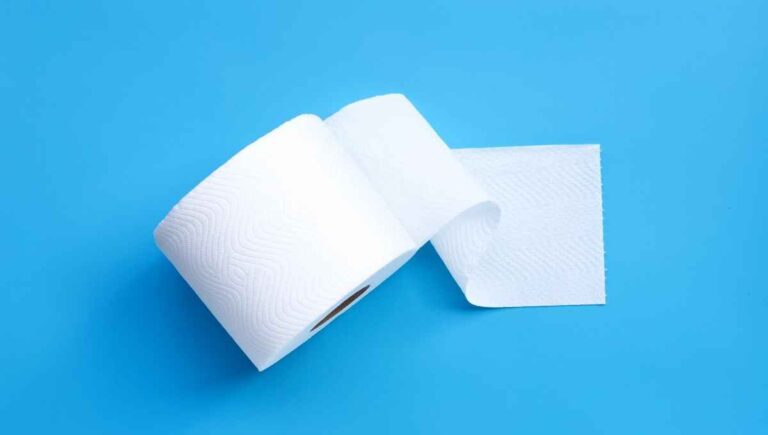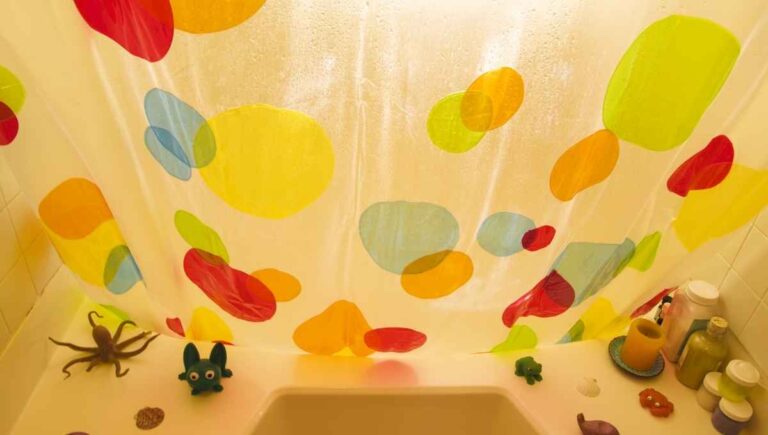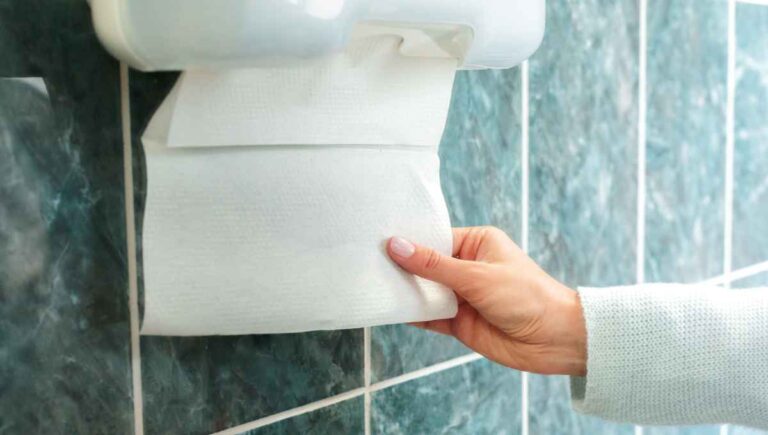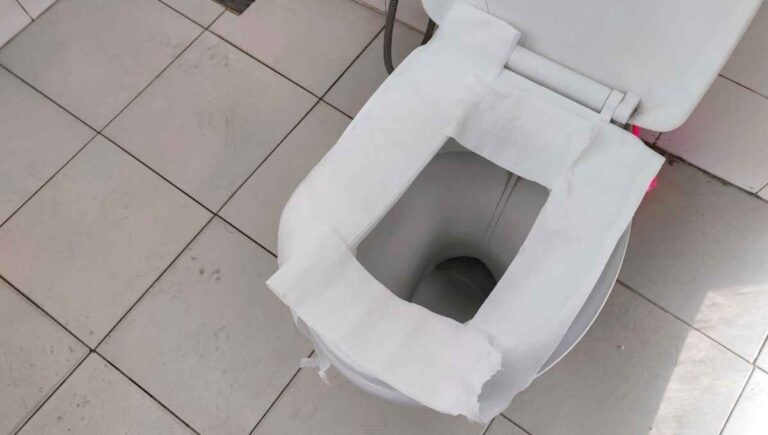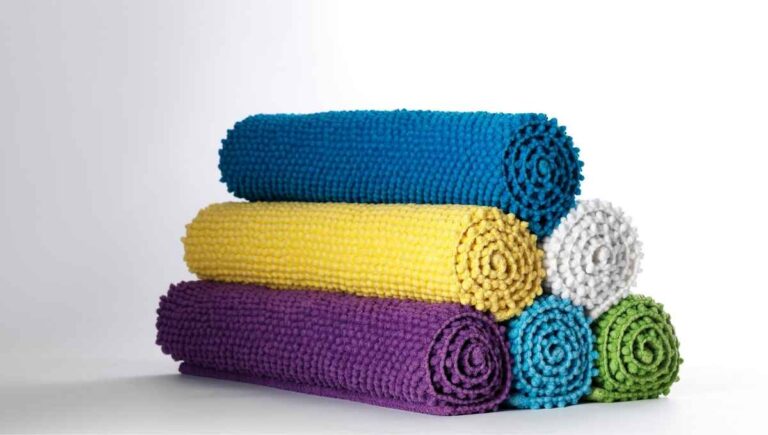Orange Ring in Toilet Bowl? (The Causes and How to Fix It)
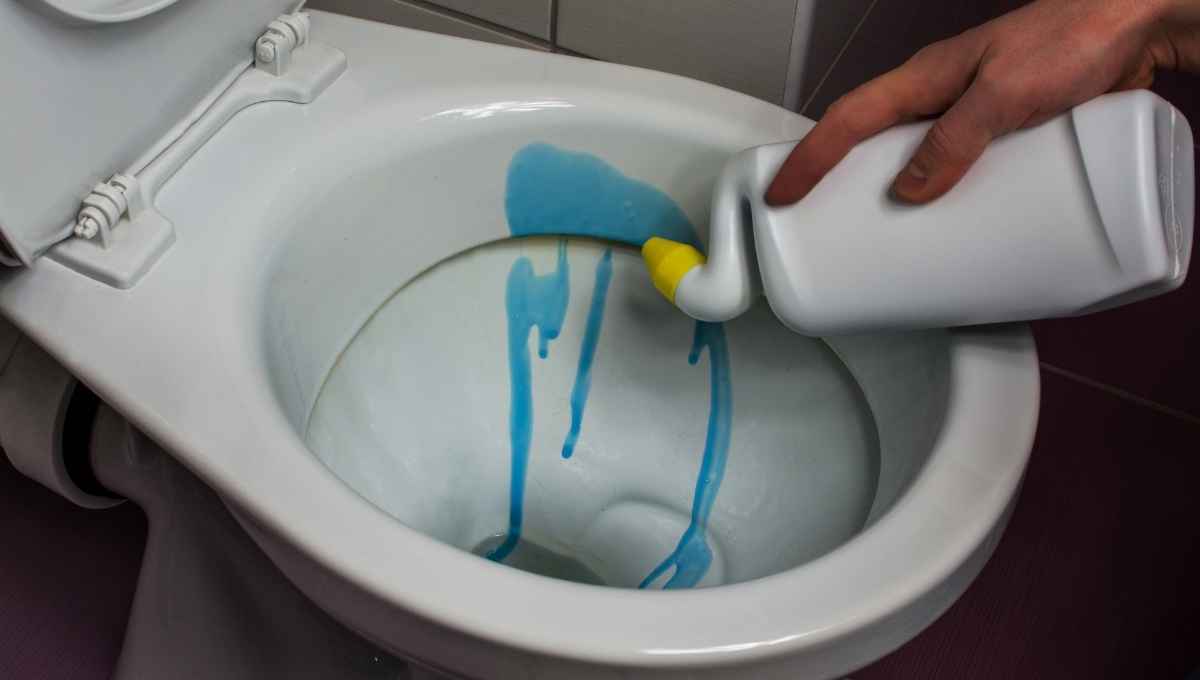
Don’t you hate having an orange ring in your toilet bowl? It looks so disgusting to the eye. But have you wondered what is causing it? And more so, how can you fix it?
An orange ring in your toilet bowl is caused either by hard water, mineral build-up, or a bacteria named Serratia Marcescens. This bacteria loves humid environments, and they feed off hard water and other sources of waste.
Additionally, that bacteria can also come in pink or red colors. So, let’s find out what Serratia Marcescens is, why it loves humid environments, how to get rid of it, and what we can do to avoid having that dreadful orange ring come back.
This post contains affiliate links. This means Household Blogger may earn a commission should you make a purchase using any of our links. Please refer to our full affiliate disclosure policy for full details.
Here’s a Quick Pro Tip!
Serratia Marcescens can be eliminated using non-toxic ingredients that you may have in your home. So, try to check these out before attempting to use any chlorine-bleach cleaner. But don’t hesitate to use it if nothing else works!
Here are our favorite cleaning products to get rid of bacteria:
1. Baking Soda – Mix this miraculous cleaning agent with vinegar to remove that odd ring inside your toilet.
2. Distilled White Vinegar – Remove harsh spots with this amazing acidic agent.
3. Chlorine Bleach Toilet Bowl Cleaner – Get rid of that nasty bacteria immediately.
Why the Orange Ring
An orange toilet ring isn’t aesthetically pleasing, so it’s only natural for you to want to remove it. But, to understand how to get rid of it effectively, you have to know why your toilet has it.
So, let’s discuss this below!
Why Does My Toilet Have an Orange Ring?
Your toilet has an orange ring because of Serratia Marcescens, a bacteria that develops in humid environments. This bacteria can cause respiratory diseases and urinary tract infections in people with compromised immunological systems.
Serratia Marcescens is commonly found in bathrooms, especially in the corners that we barely pay attention to but get wet the most.
Hence, it’s important to always keep your bathroom ventilated to keep them from growing.
Orange Toilet Ring Keeps Coming Back?
If your toilet continues to develop an orange ring after you’ve tried cleaning it multiple times, then know that it’s the humid environment it’s exposed to. Serratia Marcescens can appear in most damp environments, especially if there is a lack of maintenance.
So, if you want to keep that orange ring from coming back, you should consider stepping up your cleaning schedule.
You can also use bleach to kill that bacteria and make your toilet look white again.
Why Does My Toilet Turn Orange?
Your toilet turns orange because of a bacteria that grows comfortably in humid places. This bacteria is called Serratia Marcescens, and it’s responsible for serious health issues, like asthma and other respiratory issues.
Serratia Marcescens is known to cause certain health concerns, so, ideally, you eliminate it as quickly as possible.
Fortunately, there are several methods you can do to clean your toilet and make it look brand new. Plus, cleaning your toilet will help you avoid other safety issues.
Fixing an Orange Ring in Toilet
It’s not ideal to keep that orange ring inside your toilet. Therefore, it’s highly recommended that you fix it.
So, after learning what causes the orange ring inside your toilet, we can now talk about the best way to fix it.
How to Fix the Orange Ring in a Toilet?
You can fix the orange ring in a toilet by using ingredients like baking soda, white vinegar, and even borax. These ingredients are used in different cleaning methods to help you get rid of that dreaded orange efficiently.
To use a mix of baking soda and vinegar to clean your toilet, simply put one cup of baking soda in the toilet bowl with three cups of vinegar.
Make sure to add them gradually, as they will react with each other. Next, use a brush to pass it through all the stains, then leave for 30 minutes then flush.
To use borax with vinegar, simply spray ¼ of borax into the toilet bowl. After brushing the stains, add vinegar, then brush the stains again.
You have to leave the mix there for at least 20 minutes. Then, you’re free to flush the toilet.
How Do I Get Rid of the Orange Ring in My Toilet?
You can get rid of the orange ring inside your toilet by applying vinegar and baking soda, or vinegar and borax. Additionally, you can also use a pumice toilet ring remover to help you easily get rid of the orange ring.
You can put baking soda and vinegar inside your toilet bowl to remove the stains. Don’t worry, the vinegar won’t harm your toilet bowl!
Just make sure not to mix them directly, but add them one after the other. And do it gradually to minimize the reactions.
Furthermore, you can also do the same with borax and vinegar. Make sure to add ¼ borax to the toilet bowl, brush it, then add vinegar.
You should leave them there for around 20 minutes and then flush.
How Do I Get Rid of Stains in My Toilet?
To get rid of stains in your toilet, you can use borax vinegar and bleach to make your toilet clean again. Additionally, it will also depend on the type of stain your toilet has. Therefore, it’s wise to understand what kind of stain you’re dealing with before trying to clean it.
The best part is that you can even use lemon and essential oils to clean your toilet.
You just have to mix lemon juice with your favorite essential oils, scrub your toilet with the solution, brush the toilet bowl, and then leave for 15 minutes.
After simply flushing the toilet normally, the stain should be gone!
How to Get Rid of the Orange Ring Around the Base of the Toilet?
To get rid of the orange ring around the base of your toilet, use baking soda and vinegar. They can help you get rid of this stain quickly. Just make sure to mix them gradually so that their chemical reaction doesn’t catch you off-guard.
Pour a considerable amount of baking soda into the affected area. Then, add the vinegar. After they react with each other, use a toilet brush to scrub the affected area.
Leave it for about 30 minutes. After you finish, rinse well and repeat the process if you aren’t satisfied with the result.
How Do I Get My Toilet Bowl White Again?
You can use vinegar, borax, baking soda, and lemon juice to make your toilet white again. Just make sure to identify the type of stain you want to remove. After this, proceed to choose the method that fits this purpose.
For example, you may want to use bleach to remove an orange ring inside your toilet bowl. But, you can also use a mixture of baking soda with vinegar. Or borax and lemon juice.
You just have to apply them carefully, brush the toilet and wait for at least 25 minutes.
Orange Ring Prevention and Cleaning
Getting rid of an orange ring is tedious, but it’s important to know about it. Additionally, did you know that you could also make adjustments to prevent it?
So let’s learn how to keep that dreaded orange ring from appearing again.
How Do I Stop the Orange Ring in My Toilet?
To stop the orange ring in your toilet, you have to prepare a stricter cleaning schedule from the moment you get rid of it the first time. A lack of maintenance to your toilet will provoke it to return. Additionally, keep your bathroom ventilated to avoid humidity.
The orange ring in your toilet appears because of a bacteria that grows in humid environments. So, to prevent it from appearing again, you have to keep your toilet clean and humidity-free.
Consider keeping a window open inside your bathroom to maintain fresh air.
You might also enjoy our post on Should You Flush the Toilet After Peeing?
How to Prevent an Orange Ring in a Toilet?
To prevent an orange ring in a toilet, pour a cup of white vinegar inside the bowl each month. It’ll help you avoid having an orange ring inside your toilet, although it won’t be useful for other things, such as rust elimination.
You can also use bleach to clean your toilet regularly. This substance helps control the Serratia Marcescens, which causes the orange ring inside your toilet bowl.
And, don’t let your toilet, or any part of your bathroom, become unclean.
How to Prevent Orange Rings in a Bowl?
To prevent orange rings from appearing in your toilet bowl, you have to keep a solid cleaning consistency. Additionally, you can use bleach or any other cleaner that can help prevent your toilet from having this discoloration.
Keeping a solid cleaning schedule is essential for any part of your house. But, it’s much more so when it comes to your bathroom.
So, make sure to keep a solid routine and never leave cleaning as your last priority.
How Does Baking Soda Get Rid of Toilet Rings?
Baking soda can get rid of toilet rings, especially when mixed with vinegar. Since vinegar is acid and baking soda is an alkali, they create a unique reaction that helps fight all types of dirt and debris. Therefore, they’re known to work best.
Baking soda is known for its many useful properties, so it’s no surprise that it also works to get rid of toilet rings.
In addition, it can cause dirt, grease, and other harsh stains to disappear because it’s an alkali. So, it can be used to clean many things, including your skin.
Is It Okay to Put Vinegar in a Toilet Tank?
You can put vinegar inside a toilet tank to get rid of harsh debris, such as calcium or limescale build-up. Since vinegar is non-toxic, its use is highly encouraged. Moreover, vinegar is a natural ingredient that kills bacteria, so it’s worth trying.
If you’re worrying about whether or not vinegar can harm your toilet tank, you can stop. Vinegar doesn’t harm your toilet tank or any of your toilet parts.
So, you can use it as a cleanser, and it may work even better than most caustic cleaners.
Why Does My Toilet Get a Ring So Fast?
When you get a ring because of Serratia Marcescens, it comes back quickly because this type of bacteria doesn’t need oxygen to survive. Therefore, it’s recommended to keep your toilet environment strictly controlled.
You must keep your bathroom heavily cleaned at all times. That way, you’ll keep this bacteria from growing inside your toilet bowl or any part of your bathroom.
Make sure that you use the right cleaners suited to your needs.
How Do I Get Rid of the Calcium Ring in a Toilet?
Get rid of the calcium ring in a toilet by using distilled white vinegar or lemon juice. Their acidic components will help you get rid of those stains in no time. Also, make sure to let them sit overnight for better performance.
After pouring white vinegar or lemon juice, you have to use a brush to remove any remnants from within your toilet bowl.
And make sure to scrub it thoroughly with a toilet brush, so you don’t leave any spots behind.
Different Toilet Rings
A toilet is prone to get easily dirty, especially after the constant use we give it. But, when we see a ring inside the toilet bowl, things can become nasty quickly.
So, let’s talk about the rings that may form inside your toilet bowl.
Is the Orange in My Toilet Serratia Marcescens?
Any orange, pink or black discoloration can be caused by Serratia Marcescens. So, if there’s an orange ring inside your toilet, there is a high chance that your toilet has that bacteria and it needs to be cleaned quickly.
So, pay attention to this next time you go to your bathroom. Make sure to look at your toilet, your shower or bathtub’s walls, and other spots that are prone to humidity.
Serratia loves to grow in those spots, so remember to keep your bathroom ventilated.
How Do You Get Rid of Serratia Marcescens in the Toilet?
You can use chlorine bleach to get rid of Serratia Marcescens. It won’t only clean your toilet bowl and make it look good, but it will also kill most bacteria. And you can also begin to schedule cleaning days during the week where you can use this product.
Chlorine bleach is known to be the killer of Serratia Marcescens. Apply it to the affected area of your toilet, and let it sit for 20 minutes.
Then, brush the area thoroughly to get rid of the stain. Finally, flush your toilet to rinse it. Repeat if you believe it’s necessary.
Why Is There Orange in My Toilet Bowl After a Bowel Movement?
The presence of orange color after a bowel movement can come from many things, such as medications that you’re consuming, a reaction to a certain type of raw fish that you ate, or an excess intake of vegetables with high content of betacarotene.
If you notice an orange-looking oily substance in your stool, you may be suffering from keriorrhea. This reaction occurs when you consume wax esters, which are often non-digestible.
And they can be present in oily fish and escolar fish. Luckily, it doesn’t require hospitalization, though you should still see a doctor.
But, orange stool can also become present after ingesting strong medications or a huge amount of vegetables containing beta-carotene.
But, an orange color inside the toilet bowl after a bowel movement may also represent a digestive problem. In either case, you should consult your doctor.
Why Does My Toilet Get a Ring So Fast?
Your toilet may get a ring quickly because of lack of maintenance or a high presence of Serratia Marcescens. These bacteria can survive without the need for oxygen. So, it can grow freely in almost any humid environment.
If you notice an orange, pink or red ring inside your toilet bowl, make sure to take all the measures necessary to get rid of it.
That way, you’ll avoid a lot of headaches and health concerns.
How Do I Get Rid of the Calcium Ring in a Toilet?
To get rid of calcium build-up in your toilet, apply distilled white vinegar or lemon juice. Since both have high acidic components, they work effectively to get through the hardest stains. So, they’re worth the try.
Pour vinegar or lemon juice into the toilet bowl and let it sit overnight. After, brush off the stains thoroughly and make sure to leave no spots.
If you find it necessary, repeat the process until your toilet is clean again.
You might also enjoy our post on How Do I Get My Bathtub White Again?
Related Questions
How to Prevent Pink Rings in the Toilet Bowl?
To prevent pink rings in the toilet bowl, use bleach-based toilet cleaners. Bleach is a strong substance that can help kill the bacteria that’s causing the discoloration inside your toilet. Therefore, it’s highly encouraged to use it for these purposes.
The pink rings that appear in the toilet bowl are provoked by a bacteria called Serratia Marcenscens, which is the culprit behind most serious health infections.
So, it’s very important to identify it correctly and eliminate it as soon as possible.
Why Is My Urine Leaving a Red Ring in a Toilet?
Serratia Marcescens, rust, hard water, mineral build-up, and serious medical conditions may be causing your urine to leave a red ring inside your toilet bowl. Yet, they are not exclusive, so it’s best to investigate the matter before reaching a solid conclusion.
A red or pinkish-looking ring inside a toilet could indicate the presence of Serratia Marcescens, but it can also indicate the presence of a health concern that needs to be treated right away.
Moreover, hard water with strong mineral compounds could also be the culprit.
Why Does My Toilet Brush Turn Orange?
Just like a toilet, your brush can turn orange because of the presence of bacteria. In this case, the bacteria may have accumulated due to a lack of maintenance. Fortunately, there are ways to get rid of this orange stain. So, it’s possible to use your toilet brush again.
If you don’t clean your toilet brush regularly, it’s likely to develop Serratia Marcescens and other types of unwanted bacterium.
So, it’s best to take the precautions necessary to keep your toilet brush clean and stain-free.
Final Thoughts
So, an orange toilet ring tells you that there is Serratia Marcenscens, but it may also be rust or hard water in the bowl that needs to be cleaned.
Luckily, you can use ingredients like bleach, lemon juice, baking soda, borax, and vinegar to make your toilet white again.
Since baking soda acts marvelously with vinegar, it helps eliminate the hardest stains.
We hope this article helped you learn more about Serratia Marcenscens so that you can avoid ever having it make another appearance in your bathroom!






